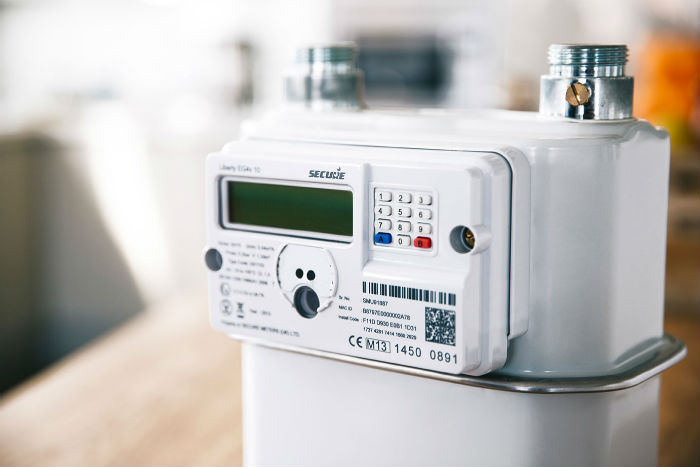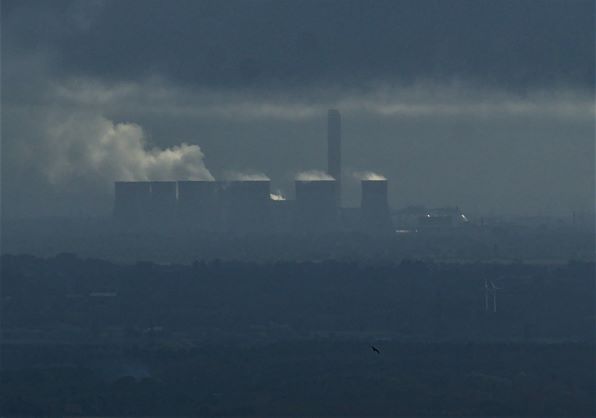
The world’s getting hotter, extreme weather events more severe, and despite significant progress in decarbonising the UK’s energy systems, there’s a lot of work to do. In April 2021, the UK government announced plans for a 78% cut in emissions by 2035 compared to 1990 levels, on a pathway to net zero greenhouse emissions by 2050. Making that happen is going to require significant changes in how the UK's energy systems function, not least by freeing up wider systems-level and consumer-level data for analysis.
Realising is growing that this is a digital transformation challenge as much as anything else: one that will require a fundamental rethink in how the UK's energy regulators and companies across the value chain approach data -- and one that will also require some carefully calibrated policy making; not least to close what the government describes as "significant gaps in current distribution network and asset monitoring".
Now a new paper “Digitalising our energy system for net zero” published this week by the Department for Business, Energy, and Industrial Strategy (BEIS), Innovate UK, and energy regulator Ofgem, lays out ambitious plans to do precisely this and -- as Ofgem’s Jonathan Brearley puts it crisply in a forward to the paper -- “Get the millions of low carbon technologies across Britain talking to each other.”
The Stack pulled 5 key takeaways from the digitalising energy systems report.
"Our national energy system is rich with opportunity for combining datasets, including system assets, the building stock, the physical network, the weather, system operation and data from other sectors" -- The “Digitalising our energy system for net zero report. BEIS/Ofgem, July 2021.
Digitalising energy systems: 5 key takeaways

1: Data Dinosaurs?
Good quality, permissively licensed energy data has historically been hard to come by. For those wanting to train AI algorithms or simply better manually estimate consumption patterns, that's a huge obstacle.
As Ofgem notes in the report: "A lack of incentives and a culture rooted in keeping network and asset information private have perpetuated an undervaluation or overprotection of data, leading to inaccurate and incomplete datasets, data silos and unnecessary data hoarding. These can act as blockers to data exchange. The sector has already taken good strides to overcome these barriers, but much more needs to be done."
Ofgem promises in the report to "coordinate change by providing tools to better enable industry collaboration" with, by the mid-2020s, "standards and regulatory frameworks in place that ensure energy data collection and applications meet best practice and that data assets are treated as open and accessible by default."
"[By the mid-2020s] there will be a significant step-up in the visibility of assets across the system and new digital services will make it easier for people to know what data exists and how they can gain access to it."
(For software providers, the news that "analytical solutions that offer cheaper and more agile service alternatives need to be encouraged and rewarded appropriately" may be welcome.)

Not everyone is a data dinosaur, however. The Stack would like to highlight efforts by Northern Powergrid as among those worthy of praise. The company's Distribution Future Energy Scenarios (DFES), published using an open data approach, provide forecasts down to primary substation level, with a geo-spatial tool to help visualise these values both at a primary substation and Local Authority level.
Work in an energy company and think you're doing great work with open data?
We'd like to hear about it. Get in touch.

2: Smart meter data and policy shifts on open data.
In May 2021, two charities (Sustainability First and the Centre for Sustainable Energy) published a report exploring how smart meter data, on an anonymised and aggregated basis, could support regulatory oversight of the energy transition and aid public policy making.
There's over 23 million smart meters installed in the UK. But as that report noted, there's "no central repository which might facilitate access" to data from these meters. The digitalising energy systems report of July 2021 suggests the government is considering taking the report's recommendations to open up this data seriously. Yet there's a lot of work to do on the policy front first. And users should not expect change overnight.
See also: Climate risk data is a hot mess. These open source pioneers want to set things straight.
Within a few years, "the next steps for digitalising the energy system will have been identified, including what new data governance, market frameworks and institutional designs need to be developed to ensure data privacy and cyber security while increasing market access and services", this week's report suggests.
Expect a strong push to open up smart meter data in the near future.

3: There's a chunky data literacy and skills gap
The energy sector is not alone in having a data skills gap. But amid plans for this system-wide digitalisation, it's a definite challenge.
As the report notes: "From our engagement with the sector, we have identified a data literacy and skills gap, which includes the skills required to monitor and run a complex distributed network utilising modern data collection, data analysis and digital control systems."
BEIS promised to "conduct a gap analysis to understand the current skills landscape in the sector, including the qualification levels required to improve digital skills in the energy sector."
A new independent Energy Digitalisation Taskforce (EDiT) meanwhile, run by former Conservative MP Laura Sandys and Energy Systems Catapult will deliver a report in late 2021 on "barriers to system digitalisation... and give[ing] stakeholders confidence about how they can contribute to transforming the sector."
(Cynics wondering how many reports, investigations, and various stakeholders it takes to deliver momentum on standardised and open data, would be forgiven for their jaundiced view.)

4: An "agile regulatory environment"
Ofgem is working hard, however.
The regulator says it intends to "ensure data and digitalisation expectations are included as part of the design of the RIIO-ED2 price control (the regulatory incentives regime for distribution networks)" and has also requested that energy network companies publish Digitalisation Strategies and Action Plans. As part of RIIO-2, it has also created licence obligations that require energy network companies to regularly update these plans and ensure that they comply with Energy Data Best Practice guidance.
"Data monopolies" (datasets with no competitive pressure to release them) are widespread however and Ofgem is promising (another) "holistic review" to understand these, later this year. It touts the case of ElectraLink, the UK’s energy market data hub, meanwhile, which has created a service called Flexr that pulls data held by the networks and their distributed energy resource customers into one place. This is often still delivered via spreadsheets, however.
"Flexr has therefore combined ElectraLink’s technology, data management and governance expertise to demonstrate how it can support the networks in tackling the challenges they face in enabling a more flexible energy system", Ofgem says.
A prototype landed in February 2021 that included Electralink’s "register of
distributed assets above 1 MW and a portal enabling accredited industry players to access network and asset data." (A close look at the data available suggests the industry is a very long way indeed from the kind of permissively licensed, open source data sharing that many innovators in the space might like...)

5: New digital tools...
New digital tools are needed, and BEIS and Ofgem make the right sounds about supporting their delivery, saying they will "work with industry to fund and develop innovative system-wide digital solutions and architecture... build foundational capabilities through innovative solutions."
One example: BEIS has worked with the University of Cambridge – in a
partnership called the Centre for Digital Built Britain – and the UK's security agencies to develop a system for common tools and frameworks known as the "Information Management Framework". The idea is to establish a common language for "digital twins" to connect.
Innovate UK meanwhile has launched a £3 million competition to deliver "Modernising Energy Data Applications". Nine applicants have been selected (including Farad AI, which has developed a digital twin of the UK’s low voltage electricity grid at substation level, providing low-carbon technology project developers like EV charge point or renewable energy developerw with grid connection visibility.)
There is clearly a lot of work to do, but if nothing else, Ofgem and BEIS's digitalising energy systems report lays out clearly some of the pathways to improving data access across a heavily siloed industry, transforming asset visibility, and supporting innovation.
Now, it just needs to deliver.
